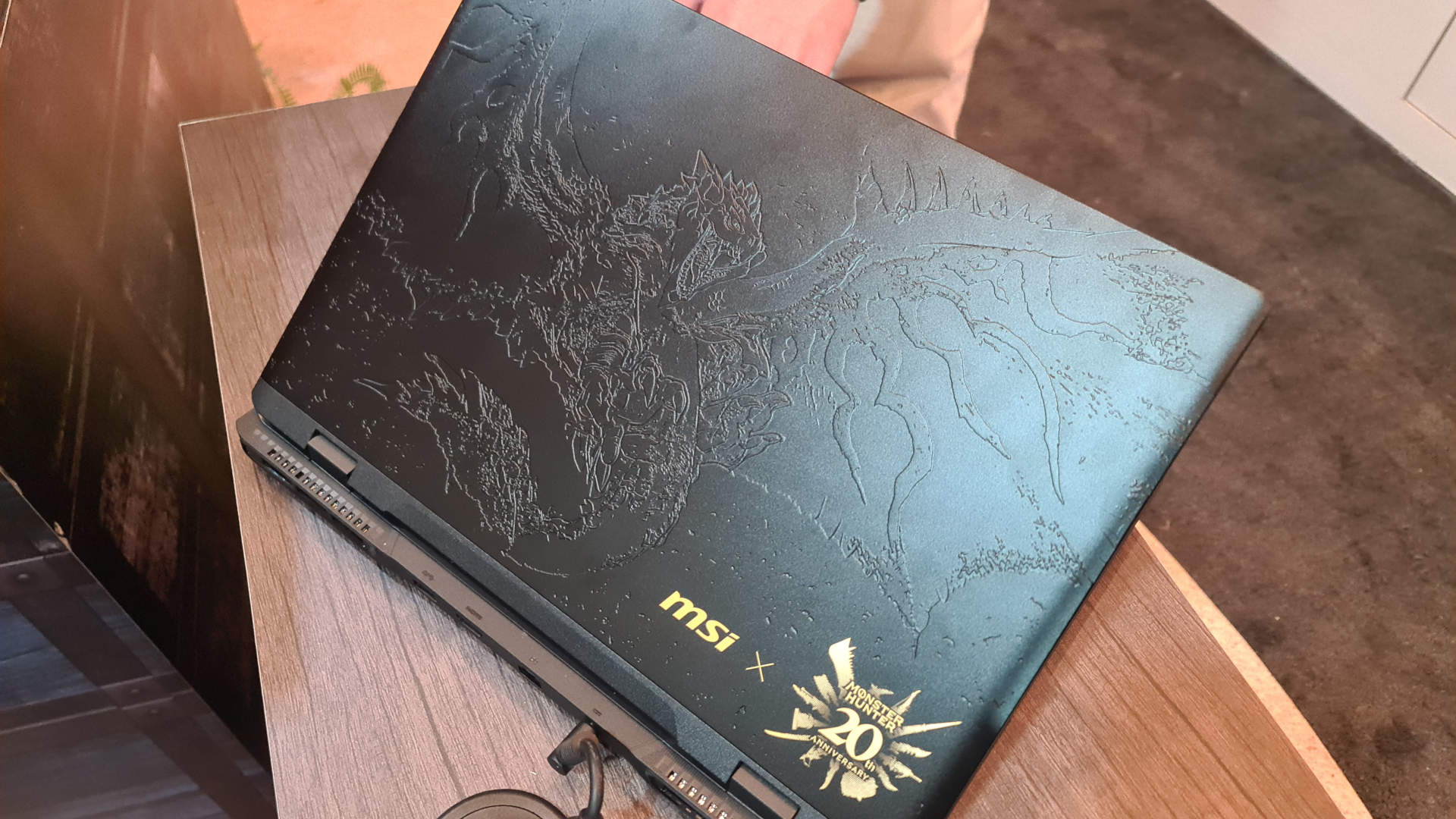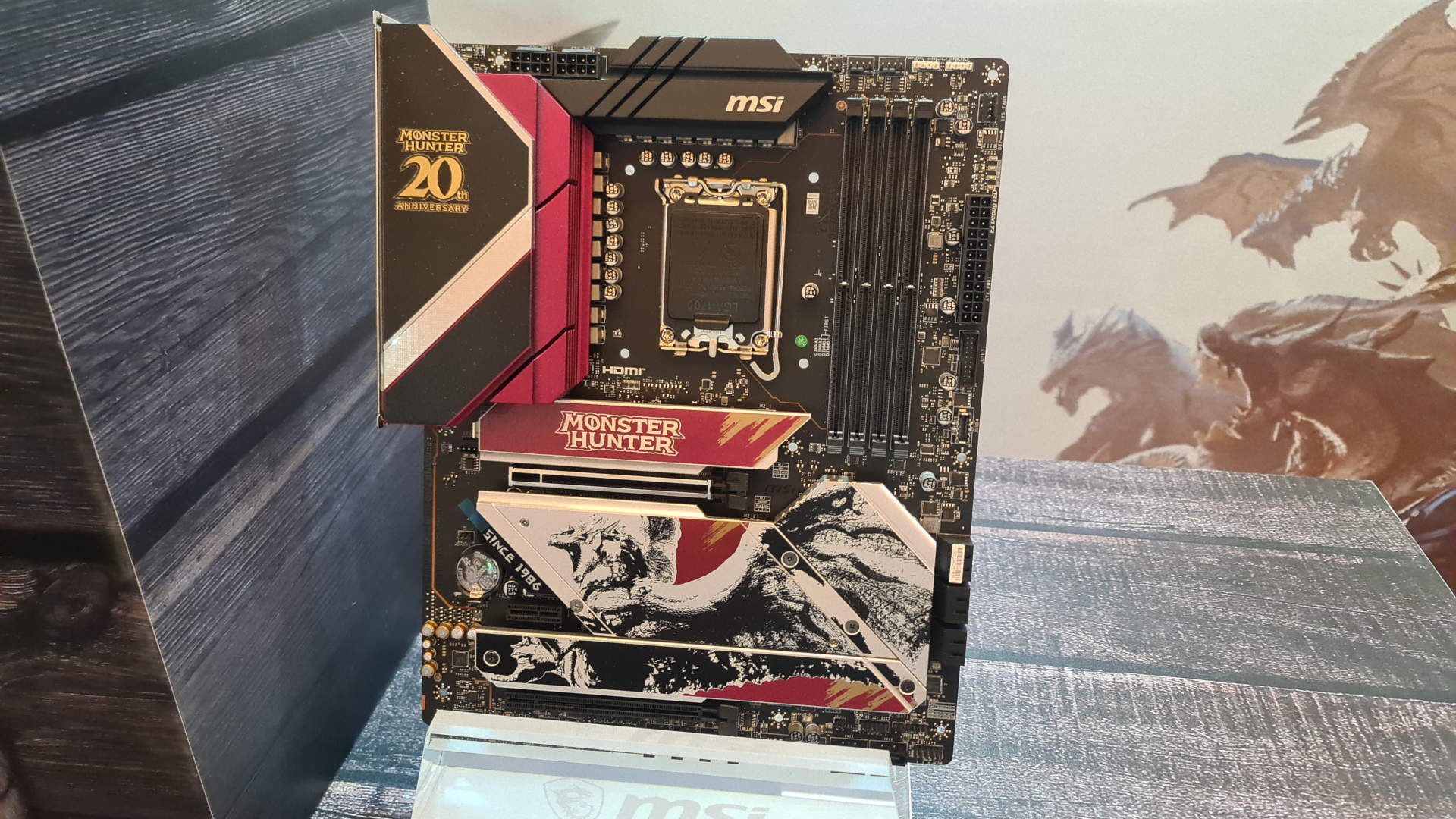MSI and Capcom team up to celebrate 20 years of Monster Hunter, with more MH-themed goodies than you can shake a stick at
If you have the cash, you'll be able to almost all out with a Monster Hunter PC build.

It's been almost 20 years since the Monster Hunter action RPG series first appeared on the PlayStation 2 and to celebrate its ongoing success, Capcom and MSI have collaborated to produce a range of Monster Hunter-styled products, including a gaming laptop, PC case, monitor, and gamepad. Some of it looks really neat but others come across as a missed opportunity, though.
Game-themed PC parts aren't a new thing, of course, and every year there's at least one vendor who releases a product stylised to tie in with a particular game. It's often no more than one or two items, and in some cases, the product hasn't exactly gone through a thorough check before hitting the shelves.
But in the case of MSI and Capcom's collaboration to mark two decades of Monster Hunter, there's quite an array of items to tempt you.
First up is the MSI Crosshair 16 HX Monster Hunter Edition gaming laptop, though the details are somewhat thin. This particular model sports an RTX 4060 laptop GPU but I don't know what its power limit is, nor any other specs for that matter.
MSI's latest version of its standard Crosshair 16 HX laptops top out with a Core i7 14700 HX and RTX 4070 combination, but it's not clear what CPU, RAM, or storage the Monster Hunter edition has. It does look pretty nice, so if the full specifications are decent (e.g. minimum 16GB of RAM and a 1TB SSD), then it could be an awesome gift for an MH fan.
If you want to go all Monster Hunter with a full PC build, then you can load up with n MH-themed PC case, MPG Z790 Edge motherboard, RTX 4060 Ti 8GB graphics card, 360mm AIO CPU cooler, and 27-inch 1440p 180Hz IPS monitor. As far as I can tell, none of these items have anything extra over the regular versions, just a Monster Hunter colour palette and an array of stickers.






That's normal for such collaborations and vendors don't always choose the highest-spec models for the special look. That's very much the case here but the case, cooler, motherboard, and monitor are all pretty decent. Whether they'll be worth paying extra for will be entirely down to how much of a dedicated Monster Hunter fan you are.
Keep up to date with the most important stories and the best deals, as picked by the PC Gamer team.
However, in all honesty, I just can't recommend the RTX 4060 Ti Monster Hunter card. Partly because it's the least MH-looking one of the whole lot but mostly because it's an RTX 4060 Ti.
That's the least enticing model in Nvidia's RTX 40 series and given that you're going to be paying a premium over the standard version, just for the Monster Hunter styling, you'll be far better off putting the money towards an RTX 4070 or better still, the new RTX 4070 Super.

Best CPU for gaming: The top chips from Intel and AMD.
Best gaming motherboard: The right boards.
Best graphics card: Your perfect pixel-pusher awaits.
Best SSD for gaming: Get into the game ahead of the rest.
There's no indication of prices just yet but just look up what the normal versions cost and then add, say, 20% on to the cost to account for the theme.
If all of that looks pretty expensive, then you could at least go with the Force GC30 Monster Hunter gamepad. The Xbox-style controller typically retails for around $30 so hopefully the Capcom'd version won't be hugely more expensive.
Monster Hunter's 20th birthday is officially in March this year, so there's a while yet before MSI's products will be available to buy. The specs might change by then, which may explain why so little has been said about the laptop, but at least that will give you more time to make up your mind about it all.
_____________________________________
PC Gamer's CES 2024 coverage is being published in association with Asus Republic of Gamers.

Nick, gaming, and computers all first met in 1981, with the love affair starting on a Sinclair ZX81 in kit form and a book on ZX Basic. He ended up becoming a physics and IT teacher, but by the late 1990s decided it was time to cut his teeth writing for a long defunct UK tech site. He went on to do the same at Madonion, helping to write the help files for 3DMark and PCMark. After a short stint working at Beyond3D.com, Nick joined Futuremark (MadOnion rebranded) full-time, as editor-in-chief for its gaming and hardware section, YouGamers. After the site shutdown, he became an engineering and computing lecturer for many years, but missed the writing bug. Cue four years at TechSpot.com and over 100 long articles on anything and everything. He freely admits to being far too obsessed with GPUs and open world grindy RPGs, but who isn't these days?

